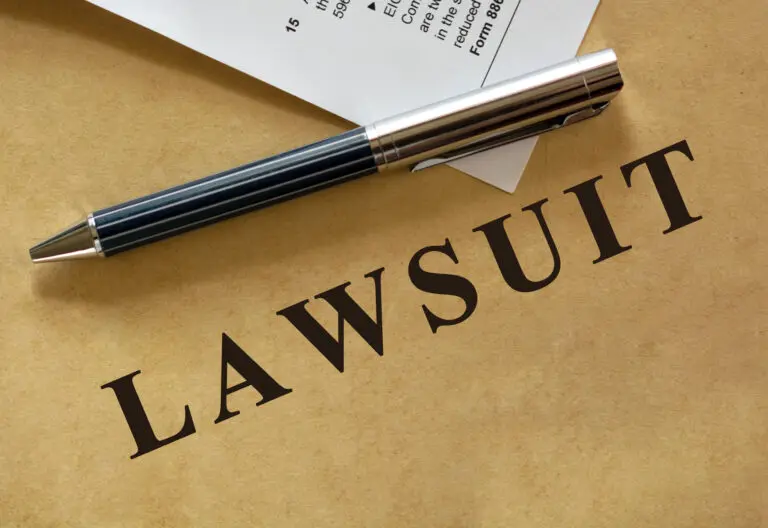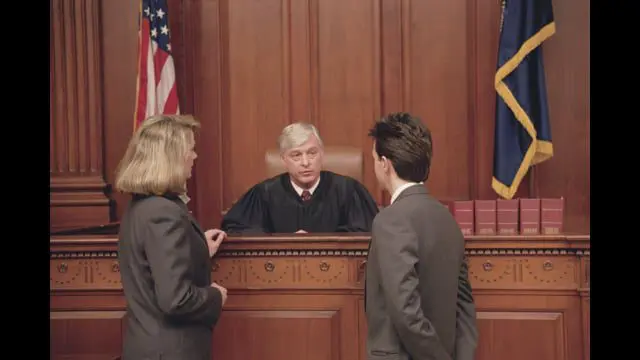Dog bite cases can be complex and emotionally charged, often involving severe injuries and conflicting narratives. When representing a victim, a dog bite lawyer must be prepared for a range of defenses that dog owners might use to mitigate their liability. Understanding these defenses is crucial for building a strong case and ensuring that the injured party receives fair compensation for their injuries. Common defenses include claims of provocation, trespassing, and lack of knowledge of the dog’s dangerous tendencies. By examining these potential defenses, both victims and their attorneys can better prepare for the legal challenges that may arise in pursuing a dog bite claim.
Common Defenses in Dog Bite Cases
Dog bite defenses can vary widely depending on the jurisdiction and the specifics of the incident. Some of the most frequently encountered defenses include:
- Provocation: One of the most common defenses dog owners use is that the victim provoked the dog. This defense asserts that the victim’s actions directly caused the dog to bite. Provocation can include behaviors like teasing, hitting, or threatening the dog, and in some cases, even unintentionally startling the animal. If a dog owner can prove that the victim provoked the dog, the owner’s liability may be reduced or eliminated altogether.
- Trespassing: Another frequent defense is the claim that the victim was trespassing at the time of the incident. Under this defense, a dog owner argues that because the victim was on their property without permission, they should not be held liable for any injuries caused by their dog. This defense is particularly strong in states that have a “no duty of care” rule for trespassers, meaning property owners are not obligated to ensure the safety of trespassers from their dogs.
- Lack of Knowledge of Dangerous Propensities: In some jurisdictions, a dog owner might argue that they were unaware of their dog’s dangerous propensities. This defense is often referred to as the “one-bite rule,” which suggests that a dog owner is not liable for the first incident unless they had prior knowledge of the dog’s tendency to bite. If the owner can demonstrate that the dog had never exhibited aggressive behavior before, this defense might be effective.
The Provocation Defense: Challenges and Counterarguments
En provocation defense can be challenging to overcome because it requires a careful examination of the victim’s actions leading up to the bite. To effectively counter this defense, a dog bite lawyer must gather evidence that demonstrates the victim did not provoke the dog or that the dog’s response was disproportionate to any alleged provocation. This could include eyewitness testimony, video footage, or expert opinions from animal behaviorists who can explain why a dog’s reaction was unreasonable.
Additionally, some states have specific laws regarding what constitutes provocation. For instance, in certain jurisdictions, a young child’s actions may not be considered provocation if the child was too young to understand the consequences of their behavior. A lawyer must be familiar with these nuances to effectively challenge the provocation defense.
Addressing the Trespassing Defense in Dog Bite Cases
En trespassing defense can be particularly potent in dog bite cases, especially if the victim was indeed on the owner’s property without permission. However, there are several ways a abogado de mordedura de perro can challenge this defense. One strategy is to argue that the victim had implied or explicit permission to be on the property. For example, delivery personnel, mail carriers, or invited guests may have a legal right to be on the property, thereby negating the trespassing defense.
Furthermore, in some states, even if a person was trespassing, the dog owner might still be held liable if the dog was known to be dangerous or if the owner failed to adequately secure the dog. Lawyers must explore these possibilities when preparing to counter a trespassing defense.
The “One-Bite Rule” and Strict Liability: Understanding the Differences
Comprender la “one-bite rule” y responsabilidad objetiva is crucial in dog bite cases. The one-bite rule suggests that a dog owner is not liable for the first bite unless they knew or should have known about the dog’s dangerous tendencies. In contrast, strict liability means that a dog owner is responsible for injuries caused by their dog, regardless of prior knowledge or the dog’s history.
A dog bite lawyer must know the applicable laws in their jurisdiction and be prepared to argue either against the one-bite rule or for strict liability. For example, in strict liability states, an attorney could emphasize that the owner’s knowledge of the dog’s behavior is irrelevant, and the mere fact that a bite occurred establishes liability. In one-bite rule states, the attorney may need to gather evidence demonstrating that the owner was aware of the dog’s aggressive behavior or should have reasonably been aware.
Countering Defenses Based on Assumption of Risk
Some dog owners may argue that the victim assumed the risk of a dog bite by voluntarily approaching or interacting with the dog. This asunción de riesgos defense suggests that the victim was aware of the potential danger and chose to proceed anyway, thereby accepting the risk of injury.
To counter this defense, a dog bite lawyer might demonstrate that the victim was not aware of the risk or that the dog’s behavior was uncharacteristically aggressive. Additionally, the attorney could argue that the victim’s actions were reasonable and did not warrant the dog’s response. For instance, if a person simply approached a dog that appeared friendly and was subsequently bitten, it could be argued that the assumption of risk defense is not applicable.
The Role of Comparative Negligence in Dog Bite Cases
In some states, negligencia comparativa may be a factor in dog bite cases. Comparative negligence allows for the possibility that both the dog owner and the victim may share some degree of fault for the incident. For example, a court may find that a victim was partially responsible for their injuries if they ignored warning signs or failed to exercise caution around the dog.
A abogado de mordedura de perro must be prepared to argue against comparative negligence claims by showing that the victim acted reasonably and that the primary responsibility lies with the dog owner. This might involve gathering evidence of the owner’s negligence, such as failing to properly restrain the dog or not posting warnings about the dog’s behavior.
Examining Defenses Based on Lack of Control or Ownership
Sometimes, dog owners will claim they were not in control of the dog at the time of the incident or that they were not the legal owner of the dog. This lack of control or ownership defense can be particularly challenging to overcome because it shifts the focus away from the dog’s behavior and onto the specifics of ownership or control.
To counter this defense, a dog bite lawyer must gather evidence showing that the defendant had some level of control or ownership over the dog at the time of the bite. This could include testimony from witnesses who saw the owner interacting with the dog, documentation such as veterinary records or licenses, or evidence that the dog was regularly kept at the owner’s residence.
Investigating Third-Party Liability in Dog Bite Cases
In some dog bite cases, third parties may also be held liable. For example, if a dog bites someone while under the care of a pet sitter, kennel, or dog walker, those individuals or businesses may also face liability. This third-party liability can complicate a case but also provides additional avenues for compensation.
A abogado de mordedura de perro must thoroughly investigate all potential parties who may bear responsibility for the incident. This could involve examining contracts, policies, or agreements that specify who was responsible for the dog’s care at the time of the incident. Additionally, the lawyer may need to gather evidence that demonstrates negligence on the part of the third party, such as failing to follow safety protocols or not properly restraining the dog.
Overcoming Defenses with Strong Evidence and Expert Testimony
Successfully overcoming defenses in casos de mordeduras de perro often requires a combination of strong evidence and expert testimony. Evidence such as photographs of the injuries, medical records, eyewitness accounts, and prior complaints about the dog’s behavior can be compelling in establishing the owner’s liability. Additionally, expert testimony from animal behaviorists, medical professionals, and accident reconstructionists can provide valuable insights that strengthen the case.
A dog bite lawyer should work closely with experts to prepare for trial, ensuring that all potential defenses are thoroughly addressed. This might involve anticipating the defenses that the dog owner is likely to use and preparing counterarguments that are supported by evidence and expert analysis.
Building a Comprehensive Legal Strategy
To effectively handle dog bite defenses, a comprehensive legal strategy is essential. This strategy should be tailored to the specifics of the case, including the nature of the incident, the jurisdiction’s laws, and the potential defenses that may be raised. The lawyer must be proactive in gathering evidence, interviewing witnesses, and consulting with experts to build a strong case that can withstand any defenses presented by the dog owner.
A well-rounded legal strategy also involves preparing for settlement negotiations and trial. While many dog bite cases are settled out of court, it is important to be ready to go to trial if a fair settlement cannot be reached. This requires thorough preparation and a clear understanding of the legal issues involved in dog bite cases.
Conclusion: Navigating Defenses in Dog Bite Cases
Navigating the various defenses that dog owners might use in casos de mordeduras de perro requires a deep understanding of the law, strong evidence, and a well-prepared legal strategy. By anticipating these defenses and preparing effective counterarguments, a dog bite lawyer can help ensure that their clients receive the compensation they deserve for their injuries. Whether facing claims of provocation, trespassing, or lack of knowledge of the dog’s dangerous propensities, being prepared for all potential defenses is key to achieving a successful outcome in a dog bite case.
Attorneys.Media Video Document References
- Is Personal Injury Part of Your Law Practice?
- As an Attorney, How Are You Generating Content for Your Online Presence?
- How Can You Help Potential New Clients Get Their Questions Answered?
- How Do You Differentiate Yourself When Someone Looks Online for Help?
- How Do You Differentiate Yourself as a Criminal Defense Attorney?
- Have You Been Thinking About Video Marketing for Your Law Firm?
- Should Attorneys Use Video Marketing to Attract New Clients?
- What Do Potential Clients See When They Research Your Name Online?
- Cómo puede ayudarle Attorneys.Media









